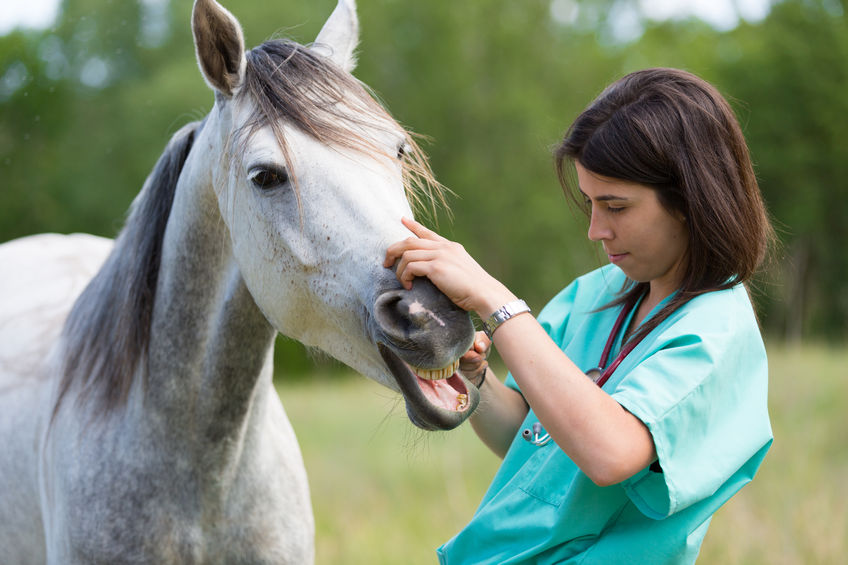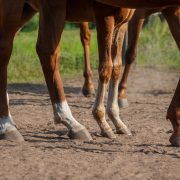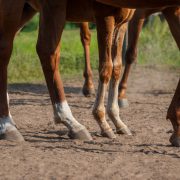Use of a saliva-based diagnostic test to identify tapeworm infection in horses in the UK
Use of a saliva-based diagnostic test to identify tapeworm infection in horses in the UK

Requires membership/payment
This article can be accessed via RCVS Knowledge Library Membership (click here).
In our edition of: Jun 2018
In our categories of: equine
our summary:
Lightbody, K.L. et al. (2018) Use of a saliva-based diagnostic test to identify tapeworm infection in horses in the UK. Equine Veterinary Journal, 50 (2), pp. 213-219
Horses are exposed to a number of parasitic helminths whilst grazing, including tapeworms Anoplocephala perfoliata, Anoplocephala magna and Paranoplocephala mamilliana, and roundworms cyathostomins, large strongyles and Parascaris equorum. Studies have shown that A perfoliata is present in significant numbers of horses examined.
The possibility of anthelmintic resistance, and the fact that there are limited other treatment options for equine helminths, means that the practice of frequent all-group administration of anthelmintic has been replaced with targeted selective treatment strategies using diagnostics. One such diagnostic tool is the noninvasive saliva ELISA test EquiSal® Tapeworm which was developed to enable horse-owners to carry out testing.
The aim of this study was to evaluate the use of this test in naturally affected horses and to assess the impact that the use of the test had on the use of anthelmintics during the study period.
Saliva samples were collected from all horses present at a UK welfare charity during autumn 2015 and autumn 2016. There were three testing periods: autumn 2015, spring 2016 and autumn 2016.
Horses were grouped according to the number of tests carried out and then according to test date. Only the results from the ‘constant herd’ – permanent residents between autumn 2015 and autumn 2016 – were analysed. The constant herd consisted of 215 horses tested on all three occasions and 22 tested in autumns 2015 and 2016 but not in the spring 2016. It contained a range of ages and breeds. A total of 1,000 saliva samples were taken.
Horses were treated for Anoplocephala infection based on the saliva score derived from the EquiSal® Tapeworm test. Horses diagnosed as ‘low’ (<0.09) received no tapeworm treatment and those with a ‘borderline’ (0.09-0.6) or ‘moderate/high’ (>0.6) saliva score were treated with praziquantel‐based products according to the manufacturer’s instructions.
Analysis shows 71% of the constant herd (168 horses) received no tapeworm treatment during the study period based on a low saliva score. The remaining 29% (69 horses) were administered a praziquantel‐based anthelmintic; of these 69 horses, 46 were treated once with anthelmintic, 16 twice and 7 three times. There was no increase in tapeworm prevalence in the 237 horses despite the reduction in the use of anthelmintics.
Geldings and mares had a similar level of ‘borderline’ or ‘moderate/high’ diagnoses (32/113 vs 37/124). Younger horses required more treatments, with 55% of 1-5 year-old horses requiring treatment on at least one occasion and 26% of the 1-5 year-olds requiring multiple treatments following ‘borderline’ or ‘moderate/high’ diagnoses in two or three tests. Cobs and cob crosses received the most treatments, with 49% reporting at least one ‘borderline’ or ‘moderate/high result’.
There was an 86% reduction in anthelmintic administration during the study period when compared with a treatment strategy based on two annual treatments for all horses.
One limitation of the study is that no other management practices were included in the analysis. Two of the authors declare an affiliation to Austin Davis Biologics who developed the EquiSal® Tapeworm test.
The study demonstrates that monitoring of tapeworm infection using the EquiSal® Tapeworm test may have a role to play in helping reduce the use of anthelmintics. As prevalence and frequency of tapeworm infections can be affected by a variety of factors including pasture management, climatic and environmental conditions and geographic locations, regular twice-yearly monitoring will be required to identify new infections and allow treatment at an early stage, reducing exposure to the rest of the herd. Regular monitoring will also identify those individuals that may be more prone to reinfection.
It will be important that veterinary surgeons educate owners on the use of the EquiSal® Tapeworm test as they will not necessarily be consulted on the results of the tests. As with any single parameter test, false positives and false negatives will occur and this needs to be taken in to consideration particularly when monitoring individual horses.
Image copyright attribute: edu1971 / 123RF Stock Photo
Join the discussion
We welcome all constructive comments and discussions. Please include the hashtag(s) below to ensure all comments can be displayed below and enable wider participation








Leave a Reply
Want to join the discussion?Feel free to contribute!